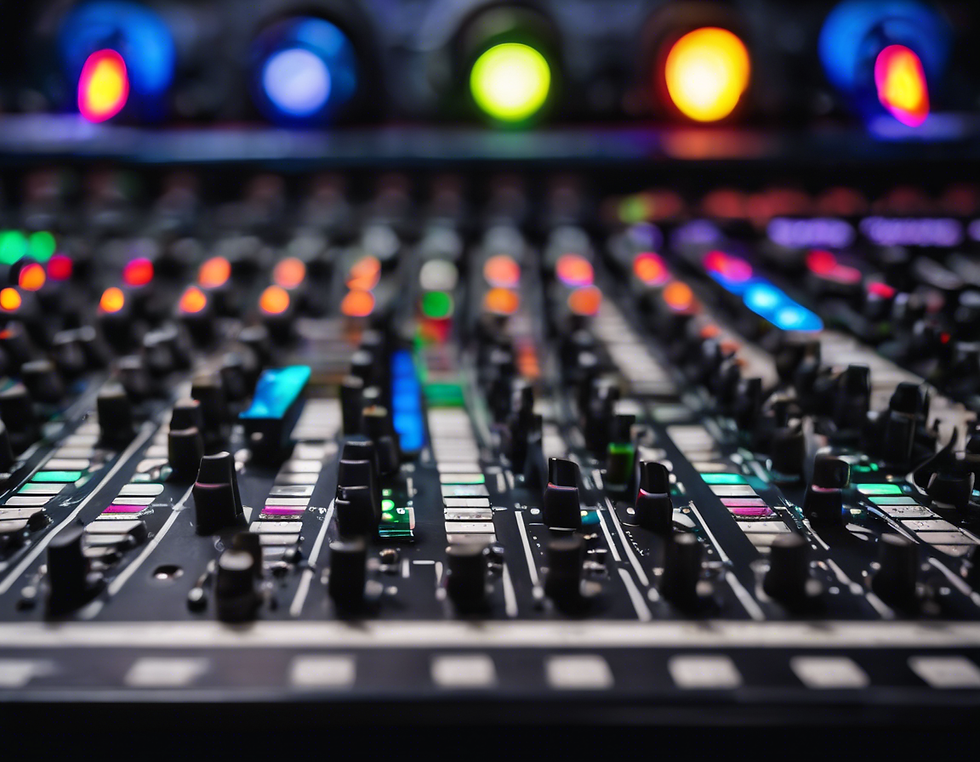How to Craft Your Own Unique Sound: A Guide to Developing Your Signature Music Style
- Famous Amos Beatz
- Dec 15, 2024
- 4 min read
Creating a signature sound in music is not just rewarding; it's an exciting adventure that allows you to explore your creativity. Whether you're a beginner or an experienced musician, developing a distinct style can significantly enhance your artistry and connect you with your audience. Let’s dive into the steps you can take to create a unique sound that reflects who you are as an artist.
Understanding Your Musical Influences
The first step in crafting your unique sound is recognizing your musical influences. This means paying close attention to what captivates you about your favorite artists.
Listen critically to the musicians you admire. What makes their music compelling? Is it the catchy melodies, the intricate rhythms, or their distinctive use of instruments? For example, you might note how Adele’s heartfelt lyrics resonate or how Pharrell Williams blends genres seamlessly. Keeping a journal to jot down these elements will help you clarify what styles and genres resonate with you. This reflective practice lays down the foundation for your personal creative expression.
Experimenting with Different Instruments and Sounds
Once you identify your influences, it’s time to explore instruments and sounds. Try stepping outside your comfort zone. If you’ve always wanted to learn guitar, now might be the perfect time. If electronic music fascinates you, consider experimenting with software synthesizers.
Collaborate with musicians from different genres to broaden your musical scope. For instance, jamming with a jazz guitarist could introduce you to new improvisational techniques that may influence your sound. Unplanned musical explorations often yield the most genuine ideas.

Defining Your Songwriting Style
With your influences and new sounds in mind, start to define your songwriting style. This includes thinking about lyrical themes, song structures, and how you approach your compositions.
Do you lean toward storytelling in your lyrics, or do you prefer abstract concepts? You might enjoy experimenting with different structures, from traditional verse-chorus setups to more unique arrangements like circular or freeform designs.
For example, Billie Eilish often uses unconventional song structures yet captures deep emotions with her lyrics. Take inspiration from such artists and feel free to explore different time signatures, chord progressions, or alternative tunings to give your music a fresh angle.
The Importance of Production Techniques
Production techniques are crucial in shaping your sound. Whether you’re recording in a studio or from home, mastering the basics of mixing and mastering can elevate your music dramatically.
Think about how effects like reverb, delay, and distortion can enhance your compositions. For example, Taylor Swift’s use of layering harmonies adds depth to her songs. Try experimenting with these effects to discover what works best for your music.
The choice between analog equipment and digital audio workstations (DAWs) can also significantly impact your sound. If you find warmth in analog sounds, consider using hardware like tape machines or vintage synths. Alternatively, if you prefer the flexibility of modern technology, explore DAWs like Ableton Live or Logic Pro to craft your tracks.
Building Your Brand as an Artist
As you refine your unique sound, think about how you present your music to the world. Your artistic identity should align with your sound.
Consider creating a cohesive visual style that reflects your music, including a logo, specific colors, and promotional materials. Having a consistent brand makes it easier for listeners to recognize you. For instance, Harry Styles uses vibrant colors and bold visuals that resonate with his eclectic style.
Social media platforms are valuable for sharing your music and connecting with fans. Post updates, share behind-the-scenes clips, and gather feedback to build a loyal following.
Feedback and Evolution
Developing a signature sound is an ongoing process. Once you start sharing your music, actively seek constructive feedback from trusted peers and listeners. Embrace critiques; they are essential for growth.
Participate in open mics or local showcases to gauge how your sound is received live. For instance, many artists have discovered new favorite elements of their music by observing audience reactions during live performances.
Stay open to change—your musical style will grow as you evolve as an artist and respond to influences from your life and the world around you.
Stay Informed and Inspired
Finally, staying updated on current music trends can spark new ideas for your work. Attend festivals, listen to emerging artists, and keep up with advancements in music technology.
Inspiration often comes from surprising places—a conversation, artwork, or even a movie soundtrack could ignite a new creative direction. Keep an open mind and let life’s nuances feed your artistic process.
Embrace Your Journey
Crafting a unique sound is a deeply personal journey that will evolve throughout your career. By understanding your influences, experimenting with sounds, defining your songwriting style, honing your production techniques, and establishing a cohesive brand, you are on your way to creating a signature sound that truly represents you.
Above all, remember that authenticity is key. Stay true to yourself, enjoy the creative process, and allow your distinct sound to emerge naturally. Embrace every moment as part of your growth as an artist, and happy creating!




Comments